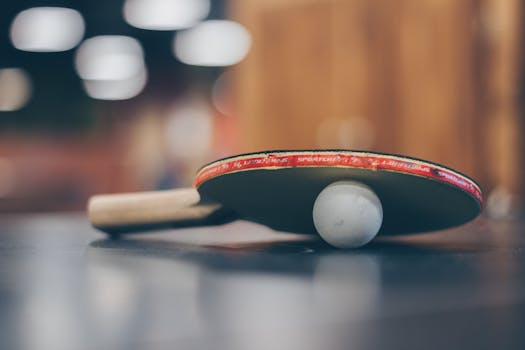Table Tennis: Techniques, Rules, and Strategies for Success
Table tennis, also known as ping pong, is a fast-paced sport that combines agility, precision, and strategy. Played on a rectangular table divided by a net, the game requires players to hit a lightweight ball back and forth using small paddles. While it may seem simple, mastering table tennis involves understanding various techniques, rules, and strategies. This article delves into these aspects to help players enhance their skills and enjoy the game more fully.
Essential Techniques in Table Tennis
To excel in table tennis, players must develop a range of techniques that enhance their gameplay. Here are some fundamental techniques:
- Grip: The way a player holds the paddle significantly affects their control and power. The two most common grips are the shakehand grip and the penhold grip. The shakehand grip resembles a handshake and allows for versatile strokes, while the penhold grip offers better wrist flexibility for spin shots.
- Strokes: Mastering different strokes is crucial. Key strokes include:
- Forehand Drive: A powerful stroke used to attack the ball.
- Backhand Drive: Similar to the forehand but executed on the opposite side.
- Topspin: A stroke that imparts forward spin, making the ball dip quickly.
- Backspin: A stroke that causes the ball to spin backward, making it difficult for opponents to return.
- Footwork: Quick and agile footwork is essential for positioning. Players should practice lateral movements and quick steps to reach the ball effectively.
Understanding the Rules of Table Tennis
Familiarity with the rules of table tennis is vital for both casual and competitive play. Here are some key rules to keep in mind:
- Scoring: A match is typically played to 11 points, and a player must win by at least two points. In tournament play, matches may be played to 21 points.
- Service: The server must toss the ball vertically at least 16 cm and strike it behind the end line. The ball must first bounce on the server’s side before crossing the net.
- Rally: Players must return the ball before it bounces twice on their side. A rally continues until one player fails to return the ball.
- Let Serve: If the ball hits the net but still goes over and lands in the correct service area, it is called a let serve and is replayed.
Strategic Approaches to Winning
Success in table tennis is not solely about technical skills; strategic thinking plays a crucial role. Here are some strategies to consider:
- Know Your Opponent: Understanding your opponent’s strengths and weaknesses can give you a significant advantage. Observe their playing style and adjust your strategy accordingly.
- Vary Your Shots: Mixing up your shots can keep your opponent guessing. Use a combination of topspin, backspin, and flat hits to disrupt their rhythm.
- Control the Pace: Dictating the pace of the game can put pressure on your opponent. Use slower shots to draw them in, then switch to faster attacks.
- Positioning: Maintain a good position at the table. Being closer allows for quicker reactions, while standing back can give you more time to prepare for powerful shots.
Case Studies: Learning from the Pros
Examining the techniques and strategies of professional players can provide valuable insights. For instance, Ma Long, a Chinese table tennis champion, is known for his exceptional footwork and powerful forehand drives. His ability to read opponents and adapt his strategy mid-game has led him to numerous victories, including multiple World Championships.
Another example is Ding Ning, a female table tennis star who excels in using spin to her advantage. Her strategic placement of shots and ability to control the game tempo have made her a formidable opponent on the international stage.
Conclusion
Table tennis is a dynamic sport that requires a blend of technical skills, understanding of the rules, and strategic thinking. By mastering essential techniques such as grip, strokes, and footwork, players can enhance their performance. Familiarity with the rules ensures fair play, while strategic approaches can lead to victory. Learning from professional players can also provide inspiration and practical insights. Whether playing casually or competitively, these elements are key to enjoying and succeeding in the game of table tennis.
